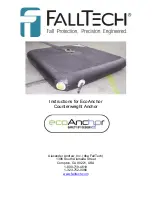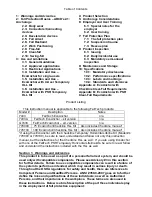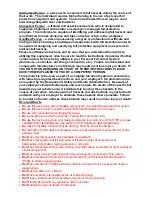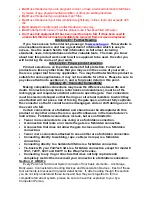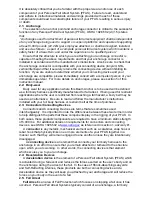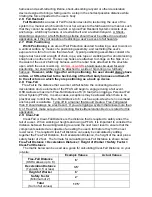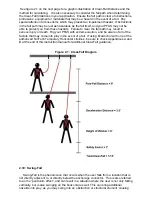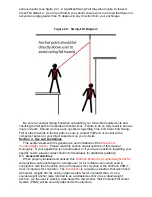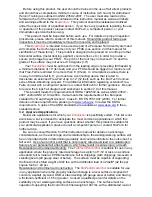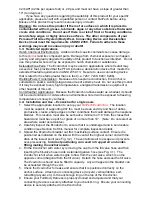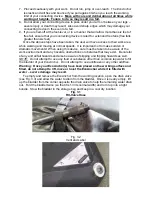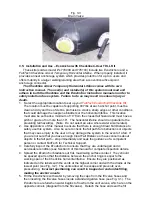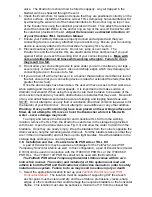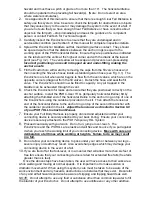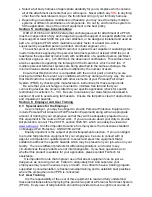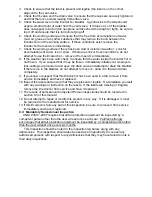
It is absolutely critical that you be familiar with the proper wear and/or use of each
component of your Personal Fall Arrest System (PFAS). Failure to read, understand
and adhere to instructional materials and warnings provided with each of these
components could lead to a catastrophic failure of your PFAS, resulting in serious injury
or death.
2.1: Anchorage
The selection of an anchor point and anchorage connector is critical to the successful
function of any Personal Fall Arrest System (PFAS). OSHA 1926.502 (d) (15) states
that:
“Anchorages used for attachment of personal fall arrest equipment shall be independent
of any anchorage being used to support or suspend platforms and capable of supporting
at least 5,000 pounds (22.2 kN) per employee attached, or shall be designed, installed,
and used as follows: as part of a complete personal fall arrest system which maintains a
safety factor of at least two; and under the supervision of a qualified person.”
Ensure that the structure to which you are attaching your anchorage connector is
capable of meeting the above requirements and that your anchorage connector is
installed in accordance with the manufacturer’s instructions. Also be sure to check that
the anchorage connector is compatible with your connecting device (lanyard, SRL,
vertical lifeline)and that it securely retains the connecting device without inhibiting its
function. If you are unable to determine whether your connecting device and your
anchorage are compatible, please immediately consult with a competent person or your
immediate supervisor. For more details on anchorages, please see section 5 of this
instruction manual.
2.2: Body-wear
Body wear for any application where this Beam Anchor is to be used will be defined
as a full body harness specifically manufactured for fall arrest. If being used for restraint
applications where the user is restricted from reaching a fall hazard, a body belt may be
used as an alternative. Be sure to read and follow the manufacturer’s instructions
included with your full body harness or restraint belt at the time of purchase.
2.3: Connectors/Connecting Devices
Connectors and Connecting Devices are terms that are sometimes used
interchangeably. It is important to note the differences between these two terms in order
to help distinguish the parts that these components play in the rigging of your PFAS. In
both cases, these products/components are required to have a minimum static strength
of 5,000 lbs. For additional details on requirements for connectors and connecting
devices, see OSHA 1926.502 at
www.osha.gov
as referenced in section 1, advisory #1.
A
connector
is any metallic, mechanical element such as a carabiner, snap hook or
rebar hook that physically links one or more elements of a your PFAS together in a
manner such that they will remain engaged to one another unless they are intentionally
disengaged.
A
connecting device
is an element that connects your full body harness to the
anchorage in an effort to ensure that you remain attached or tethered to the structure
upon which you are working. In other words, the connecting device is that element
which secures you to your anchorage.
2.4: Deceleration Devices
A
deceleration device
is the element of a Personal Fall Arrest System (PFAS) which
is activated during a fall event and reduces the forces exerted on the user’s body and on
the anchorage during the arrest of the fall. In the case of Shock-Absorbing Lanyards
and Self-Retracting Lifelines, these products are both a connecting device and a
deceleration device as they will keep you attached to your anchorage and will reduce the
forces on your body in the event of a fall.
2.5: Fall Arrest
Fall Arrest
is an area of Fall Protection which focuses on stopping a fall once it has
occurred. Personal Fall Arrest Systems typically consist of an anchorage, a full body

